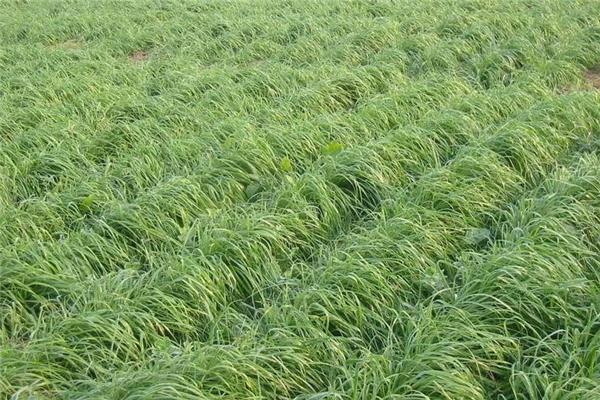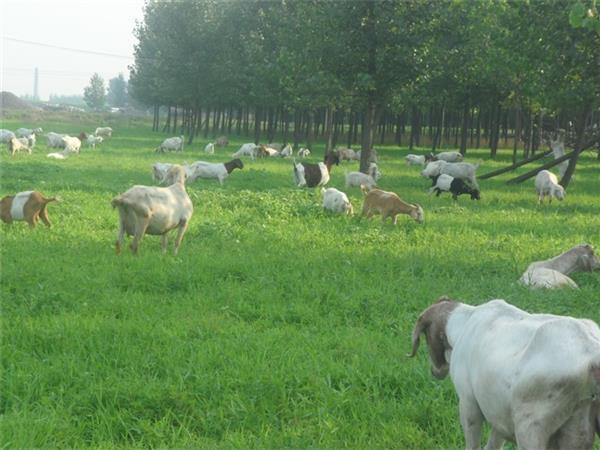The function of ryegrass and the methods of planting and maintenance
Although the name of ryegrass is nothing special, it has a lot of function and effect. it is a good choice for dust prevention, sand fixation and grass laying in horticulture.

I. the function and efficacy of ryegrass
Garden applications: it can be used for the establishment of family lawns, parks, cemeteries, public areas, golf lanes, high grass areas, or roadsides, airports and other public lawns, and can also be mixed with other seeds such as Kentucky bluegrass for the establishment of these sites, it can also be used for rapid turf construction, soil consolidation and winter sowing of warm-season lawns. Perennial ryegrass is rarely planted alone except as a short-term temporary vegetation cover. Generally speaking, the number of seeds of perennial ryegrass in mixed sowing should not exceed 20% of the total. The excessive content of perennial ryegrass in seed mixing will cause it to compete excessively with the needed turfgrass, such as Kentucky bluegrass. Destroy the establishment of these species. Traditionally, it is believed that cultivation of perennial ryegrass with slow vertical growth should be developed. Improved ryegrass cultivars can be well mixed with Kentucky bluegrass, especially in sports lawns where the cold and humid climate is warmer.
Feed application: ryegrass has good quality and palatability, not only cattle, sheep, pigs, rabbits, geese, chickens and other livestock and poultry like to eat, but also a good feed for grass carp. Ryegrass has great potential to increase production. Under the condition of better water and fertilizer conditions and early sowing, the yield of fresh grass per mu can reach about 10,000 kg.

II. Planting and maintenance of ryegrass
Soil preparation: ryegrass seeds are small, need fine soil preparation before sowing, so that the land is flat, soil pieces are fine, and good soil moisture is maintained. Should choose the soil is more fertile, convenient drainage and irrigation of the place to plant, soil preparation should be adequate base fertilizer, 30 per mu of dung manure 50 piculs.
Sowing: ryegrass can be sown in spring and autumn. Autumn sowing has more harvesting times and higher total yield, while spring sowing can prolong the harvest utilization period, and the grass is fresh and tender, but the total yield is lower. The sowing time of autumn sowing is from early September to mid-late November, and spring sowing is in early February. 1.5 kg of seed is used per mu, which is generally suitable for strip sowing. The row spacing is 15ml and 20cm, and sowing is also possible. Cover the soil with 2m / m or spread a layer of barnyard manure. Ryegrass may be mixed with legumes such as alfalfa and clover.
Fertilizer and water: adequate water and fertilizer is the key measure for perennial ryegrass to give full play to its production potential, and the effect of applying nitrogen fertilizer is particularly prominent. After each cutting, manure and urine of cattle and pigs should be applied, 20 piculs per mu, or 7.5 kg urea per mu. Ryegrass is a forage grass that needs more water. Ryegrass should be irrigated in time at tillering stage, jointing stage, heading stage and after each cutting to ensure water supply so as to increase the yield of ryegrass.

Weeding: after the peak tillering period, the line has been closed for shade, but no more weeding. After each harvest, a small amount of nitrogen fertilizer should be applied to accelerate regeneration and increase yield. Attention should be paid to the harm of tigers and mole crickets at seedling stage, and "poison silk" pesticides should be used for prevention and control if found.
Harvesting: the height of the ryegrass harvesting layer is about 30 meters. The harvest sooner or later, times and yield are not only related to fertilizer and water management conditions, but also affected by sowing date. If sown in early autumn, it can be cut once or twice this year, and about 4 times from the Beginning of Spring to Lesser Fullness of Grain the following year. Those sown in October, if well managed, will be cut once in the year and 2 to 3 times after the year. Spring sowing can be cut three times by the beginning of June. When keeping seeds, it is appropriate to harvest 1 Mel for 2 times, otherwise the plants are tall and easy to lodge, and the inconsistency of maturity will affect the fullness of seeds.

Generally speaking, ryegrass is relatively easy to maintain, which is one of the reasons why it is often used as lawn laying. If you have a courtyard and other open space at home, you can choose to use ryegrass to lay lawn to green your home life.
Related
- Wuhan Hospital Iron Tree Blooming Result Was Instantly Frightened by the Gardener Master
- Which variety of camellia is the most fragrant and best? Which one do you like best?
- What is the small blue coat, the breeding methods and matters needing attention of the succulent plant
- Dormancy time and maintenance management of succulent plants during dormancy
- Minas succulent how to raise, Minas succulent plant pictures
- What are the varieties of winter succulent plants
- How to raise succulent plants in twelve rolls? let's take a look at some experience of breeding twelve rolls.
- Attention should be paid to water control for succulent plants during dormant period (winter and summer)
- Watering experience of twelve rolls of succulent plants
- Techniques for fertilizing succulent plants. An article will let you know how to fertilize succulent plants.



